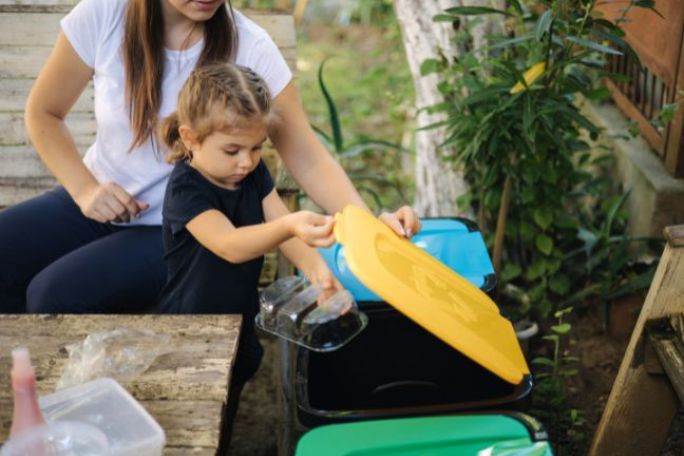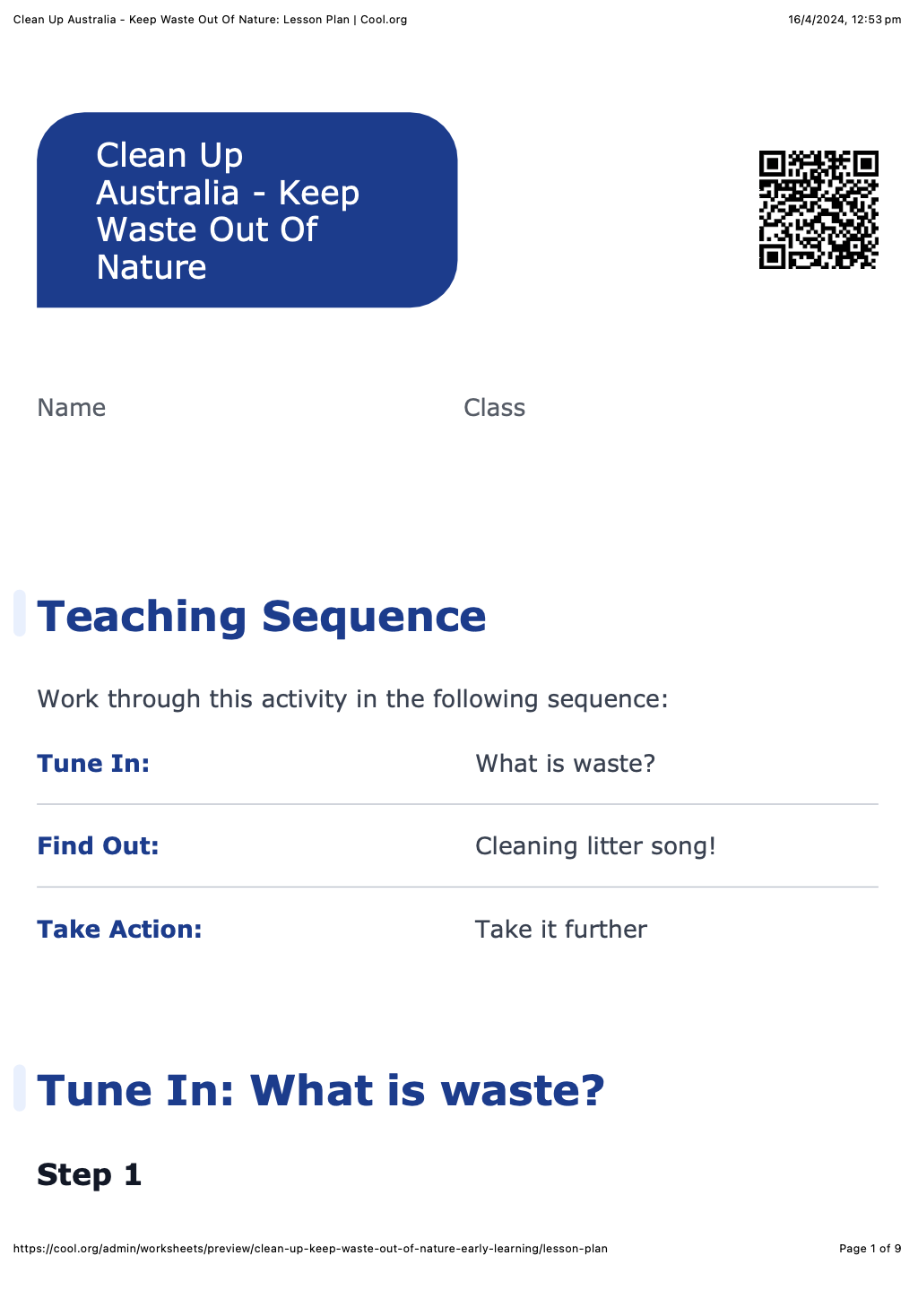Lesson summary
Children will explore what waste is and will think about how we should be dealing with waste. They will understand there are different bins for different types of waste and will sing a song about putting waste in the correct bin.
Activity Intention:
- This activity is designed to help connect children to the wonders of the natural world through sensory and play-based learning.
Lesson guides and printables
Lesson details
Skills
This activity is designed to build students’ competencies in the following skills:
- curiosity
- empathy
- global citizenship
- problem solving
Curriculum mapping
Learning Outcome 2:
- Children are connected with and contribute to their world
- 2.3 Children become aware of fairness
Learning Outcome 4:
- Children are confident and involved learners
- 4.1 Children develop dispositions for learning such as curiosity, cooperation, confidence, creativity, commitment, enthusiasm, persistence, imagination and reflexivity
UN Sustainable Development Goals
UN SDG 11: Make cities and human settlements inclusive, safe, resilient and sustainable
- Target 11.6: By 2030, reduce the adverse per capita environmental impact of cities, including by paying special attention to air quality and municipal and other waste management
Resources required
Additional info
This lesson was created in partnership with Clean Up Australia and its Education Partner, Unilever Australia - maker of household staples including Dove, Rexona, TRESemmé, Omo, Continental, Hellmann’s and Streets ice creams. Unilever and Clean Up Australia joined forces in 2020 to help inspire and empower Australians to clean up, fix up and conserve our environment. To learn more about the action Unilever is taking to improve the health of the planet, visit Sustainability - Planet & Society | Unilever.
Following this lesson plan is an ideal way for your school to take part in Schools Clean Up Day or a Clean Up on any day of the year. You’ll be joining thousands of amazing teachers in making a difference and creating positive environmental change.



Welcome back!
Don't have an account yet?
Log in with:
By signing up to Cool.org you consent and agree to Cool's privacy policy to
store, manage and process your personal information. To read more, please see
our privacy policy here(Opens in new tab).
Create your free Cool.org account.
Many of our resources are free, with an option to upgrade to Cool+ for premium content.
Already have an account?
Sign up with:
By signing up to Cool.org you consent and agree to Cool's privacy policy to
store, manage and process your personal information. To read more, please see
our privacy policy here(Opens in new tab).